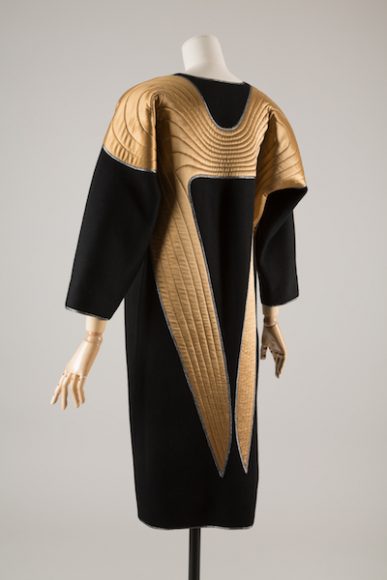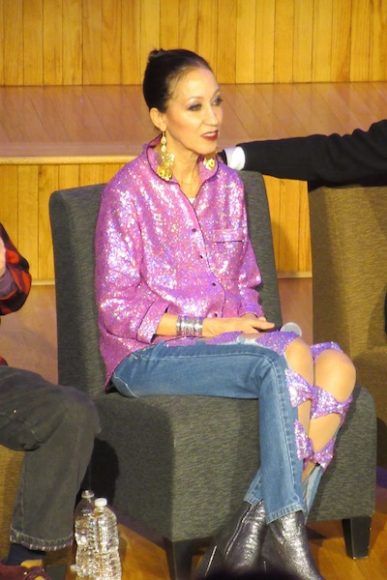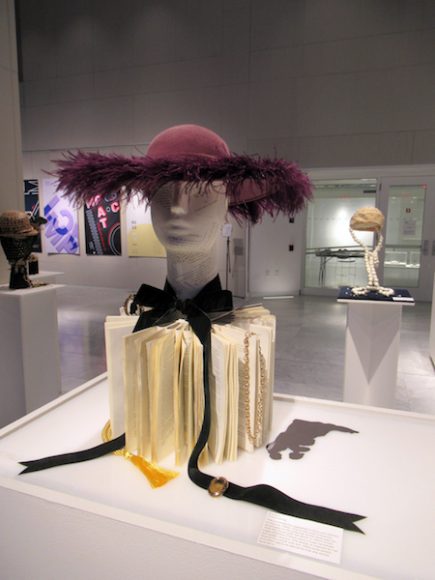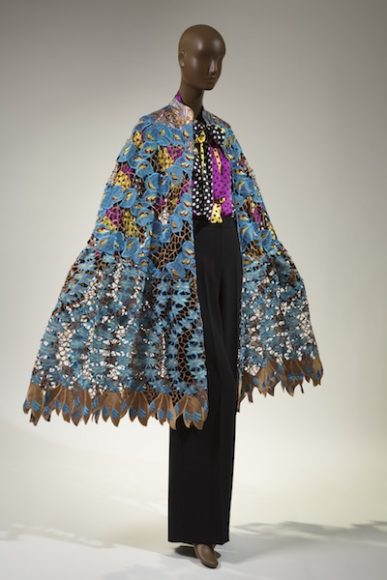Visits to the Fashion Institute of Technology always leave me feeling inspired.
And a recent late afternoon/evening spent on the famed school’s Manhattan campus proved that to be true once again.
This time, I was headed there for a film, as I had signed up for the free – so many programs are both free and open to the public – screening of “Antonio Lopez 1970: Sex Fashion & Disco.” The documentary follows the career of the late fashion illustrator (1943-1987) who spent student days at FIT.
Before the film screened in the Katie Murphy Amphitheatre of the Fred P. Pomerantz Art and Design Center, I made a point to visit The Museum at FIT, also always free and just steps away in the Shirley Goodman Resource Center.
WAG editor-in-chief Georgette Gouveia had written about “Exhibitionism: 50 Years of The Museum at FIT”
in our February issue, so I wanted to check it out. I was also planning to stop in to see “The Traphagen School: Fostering American Fashion,” which had just opened. (I had already toured the third museum exhibition, “Fabric in Fashion,” sharing my thoughts here).
“Exhibitionism” proved a stunning trip through fashion history, as seen in a selection of dresses, ensembles and accessories that had previously appeared in some of the most memorable FIT exhibitions. It was a personal delight to get a little sampling of exhibitions I’d not had the chance to see, such as the 1976 tribute to French couturier Paul Poiret (1879-1944), or to revisit favorites, such as 2017’s “The Body: Fashion and Physique.”
Continuing through April 20, “Exhibitionism” is certainly worth a visit, as is the “Traphagen” show, which continues through March 30. It’s a thoughtful exploration of the fashion school that opened in New York in 1923 and trained nearly 30,000 students – including Geoffrey Beene, James Galanos and Anne Klein – over its nearly 70-year operation.
Following those shows, I headed over to check in for the film – and was sidetracked by yet another exhibition, “Hattitude,” a lobby-level show that matched student creativity with highlights from a recently donated millinery collection. Such fun!
Finally, I settled into my seat to enjoy the documentary. It proved a nice tie-in to the day, as I’d just seen some Lopez illustrations in the “Traphagen” exhibition, and I stayed on for the post-screening panel discussion. The unannounced-though-welcome talk featured several of those who knew Lopez, namely artist Paul Caranicas, makeup artist Corey Tippin and model Pat Cleveland, all of whom were featured in the film.
The discussion was lively (are Jerry Hall’s ears burning?), and it was Cleveland’s perspective on the legacy of Lopez – which touched on her take on fashion and fashion illustration and, by extension, society itself – that I found most moving.
Clothing, she said, is more than the materials. It comes to life based on the spirit of who wears it.
And, she said, it’s the same of people, perhaps a nod to fashion’s steps toward being more inclusive.
“Every face is a beautiful face. It’s how you see it.”
Yes, another inspired visit to FIT.
For more, visit fitnyc.edu/museum/.
– Mary Shustack




